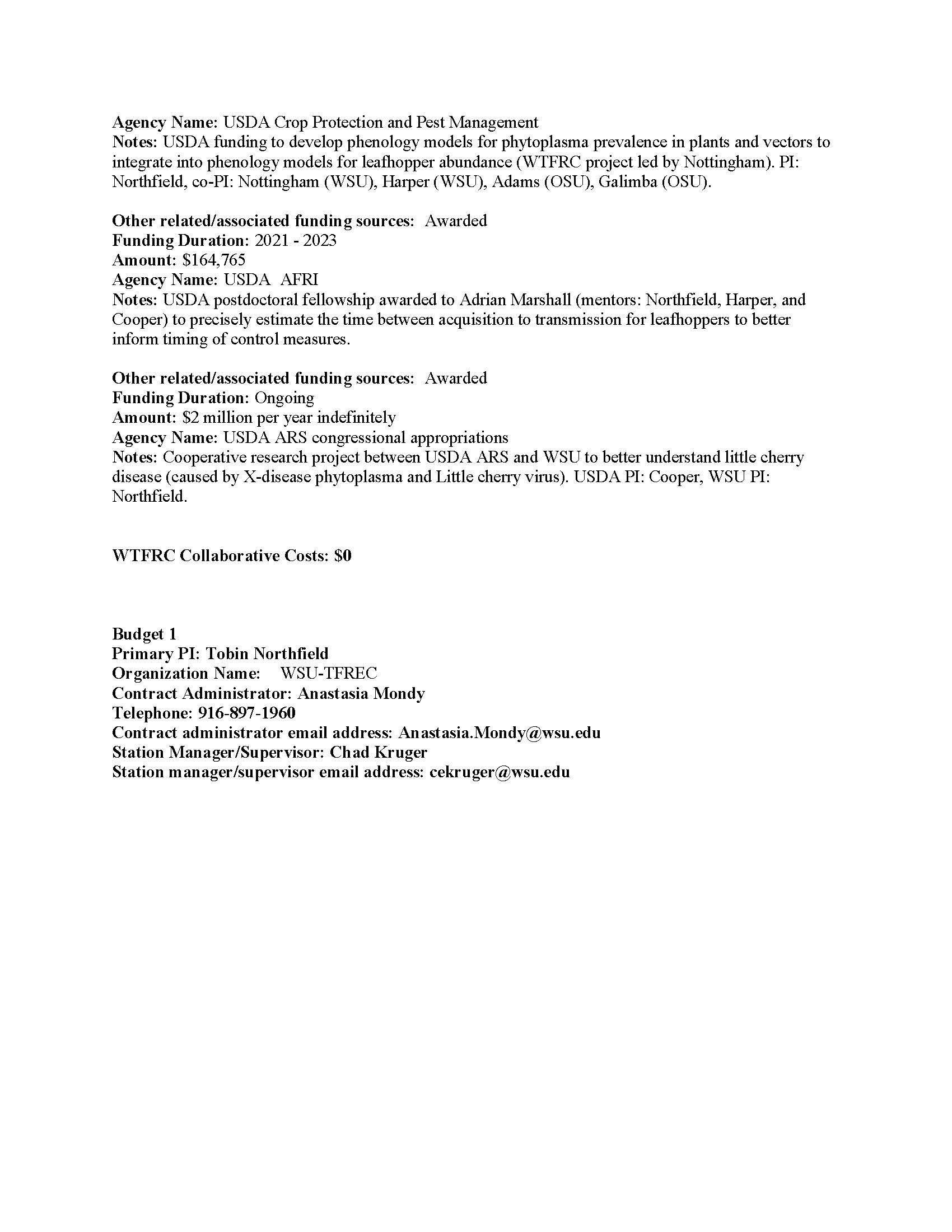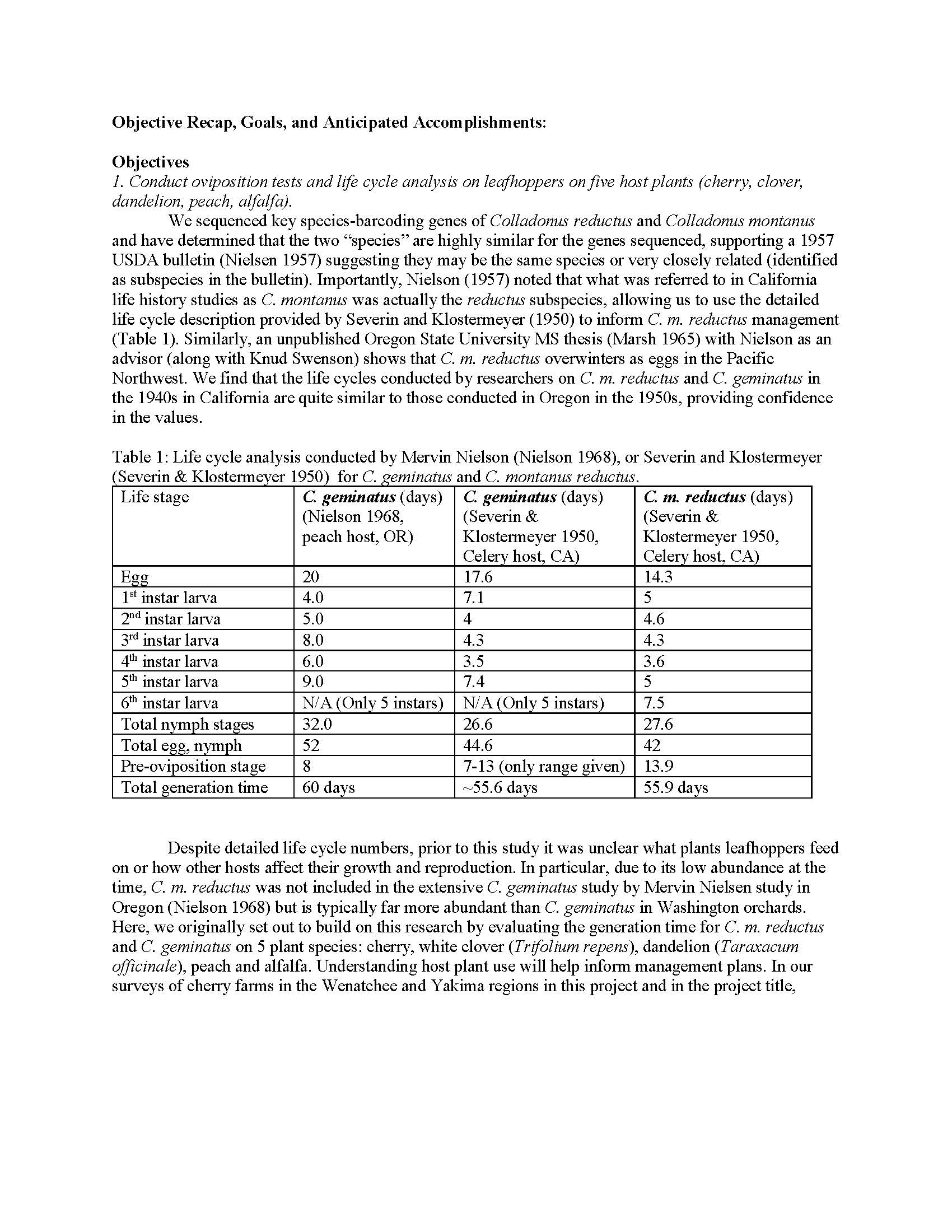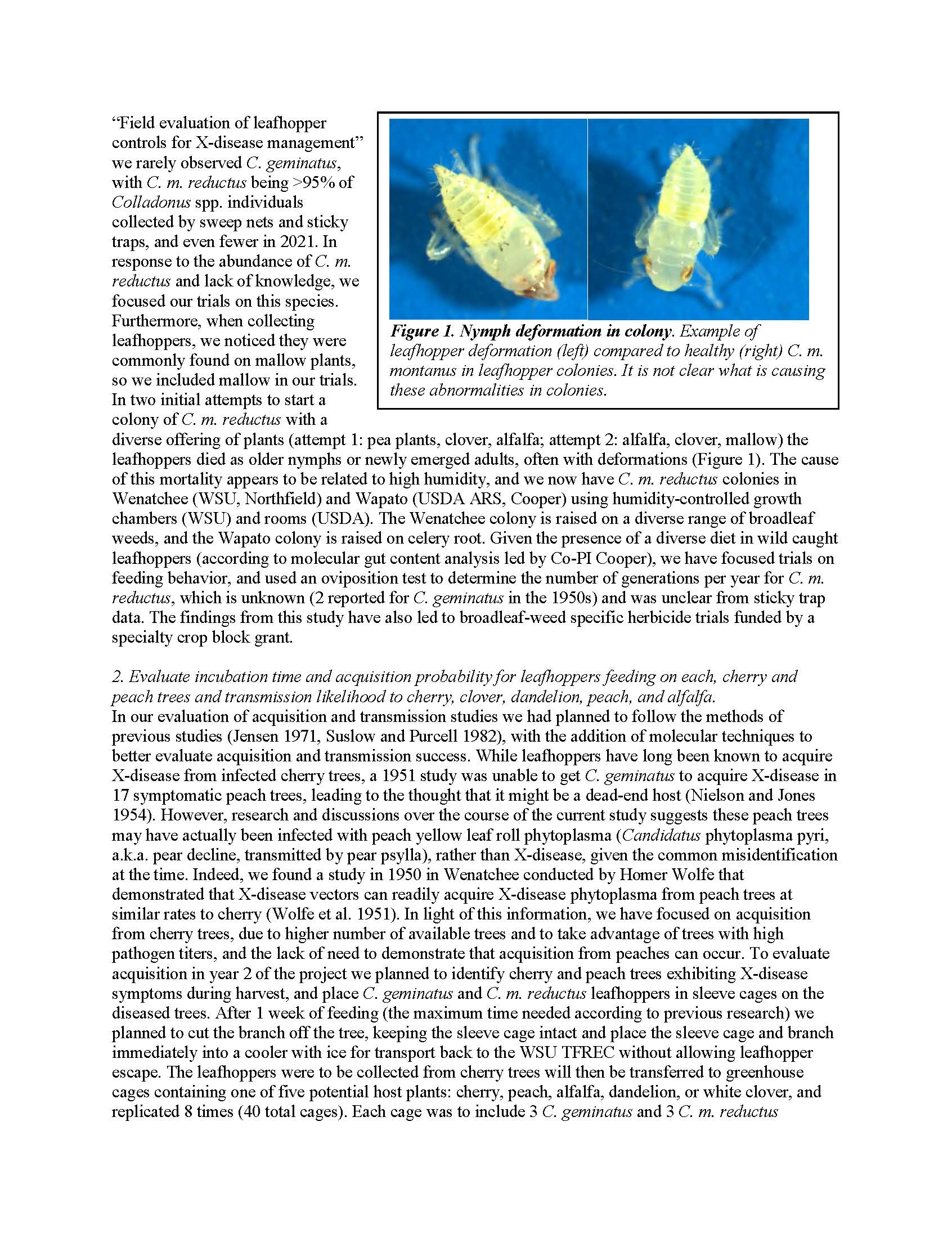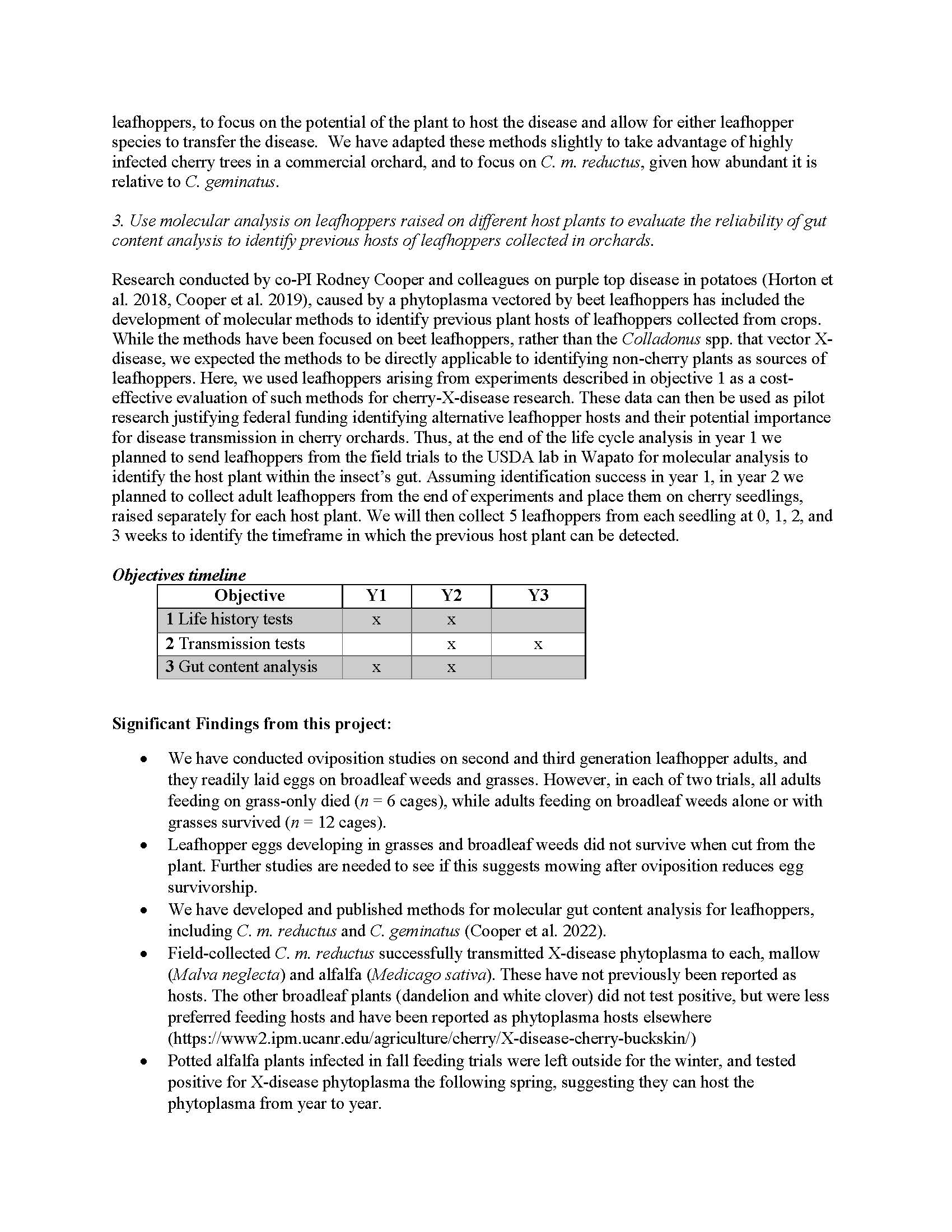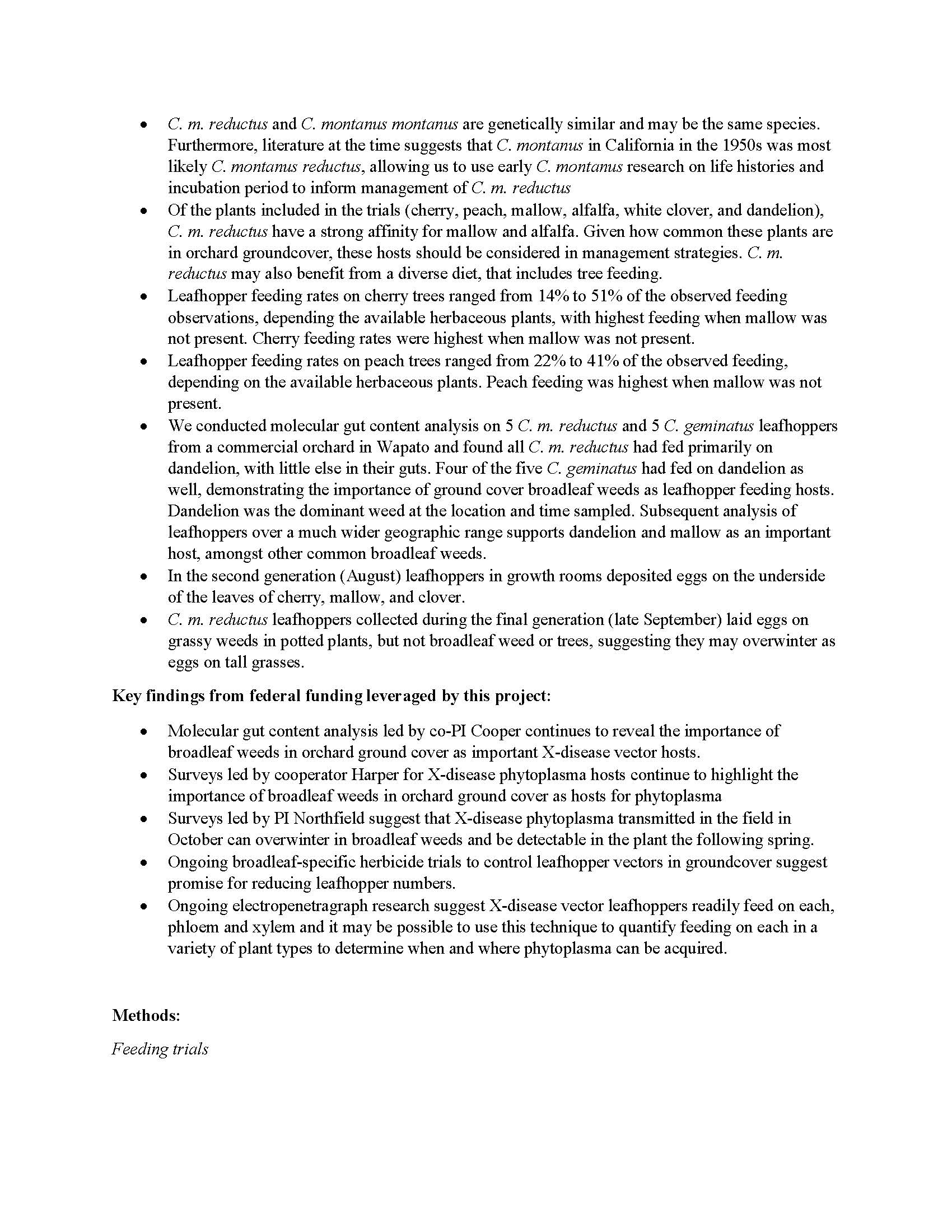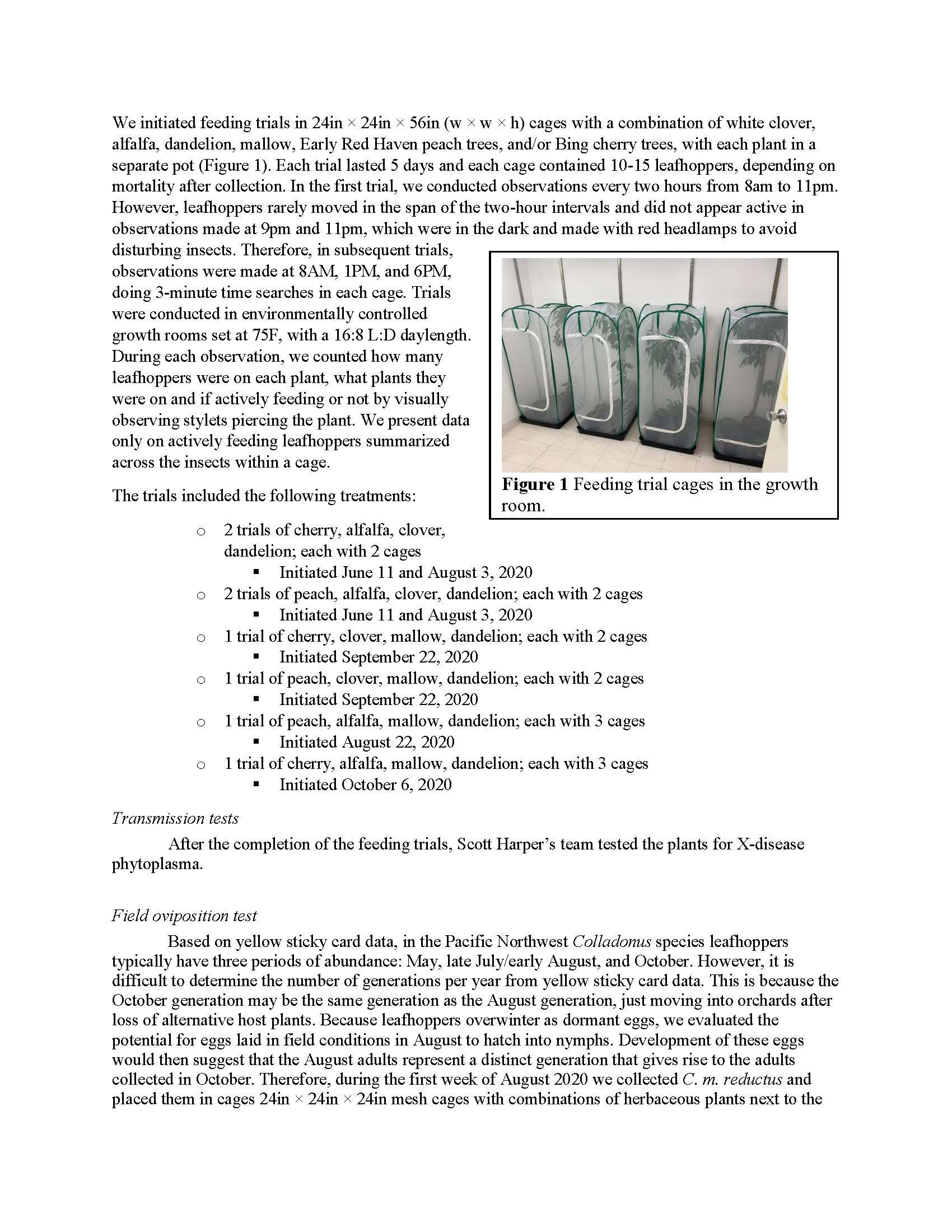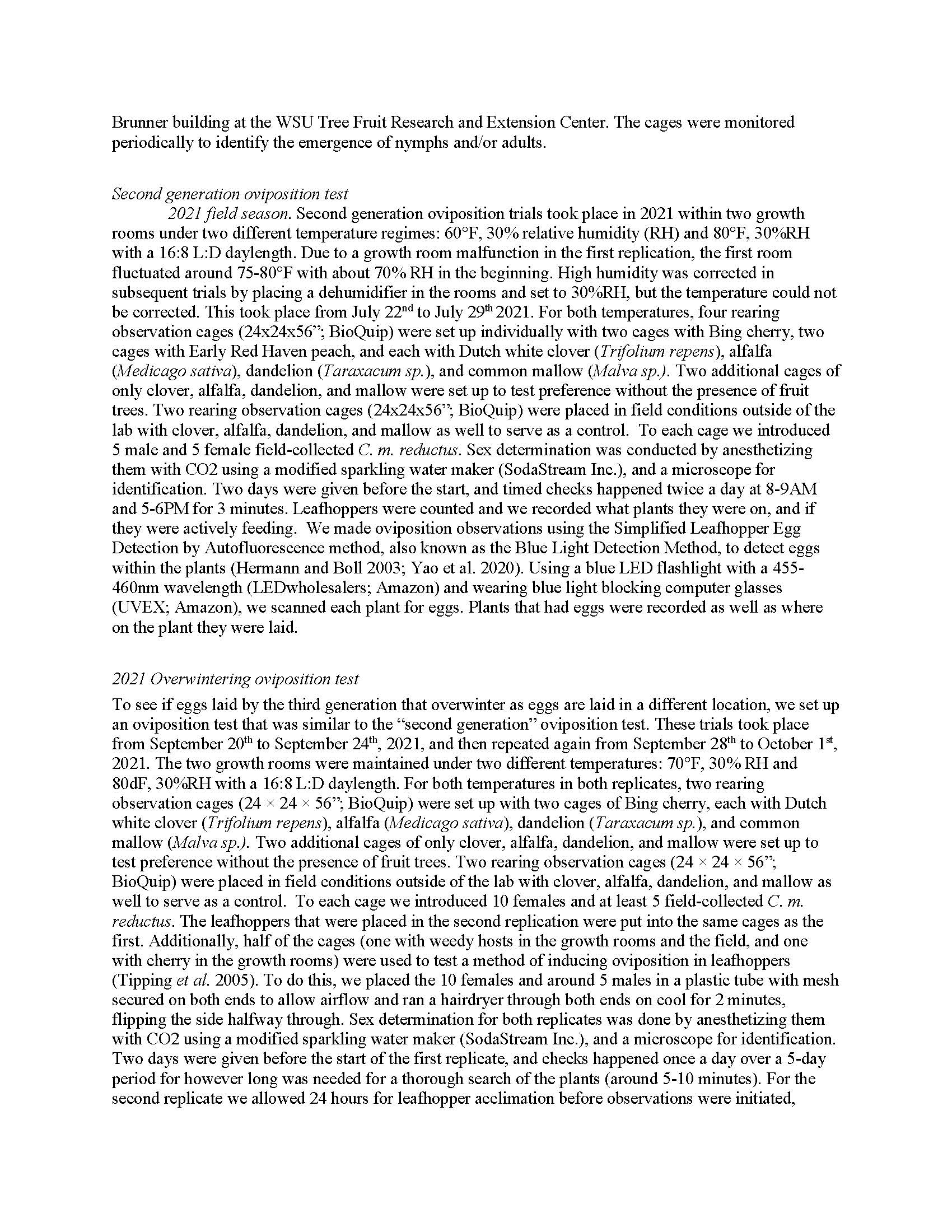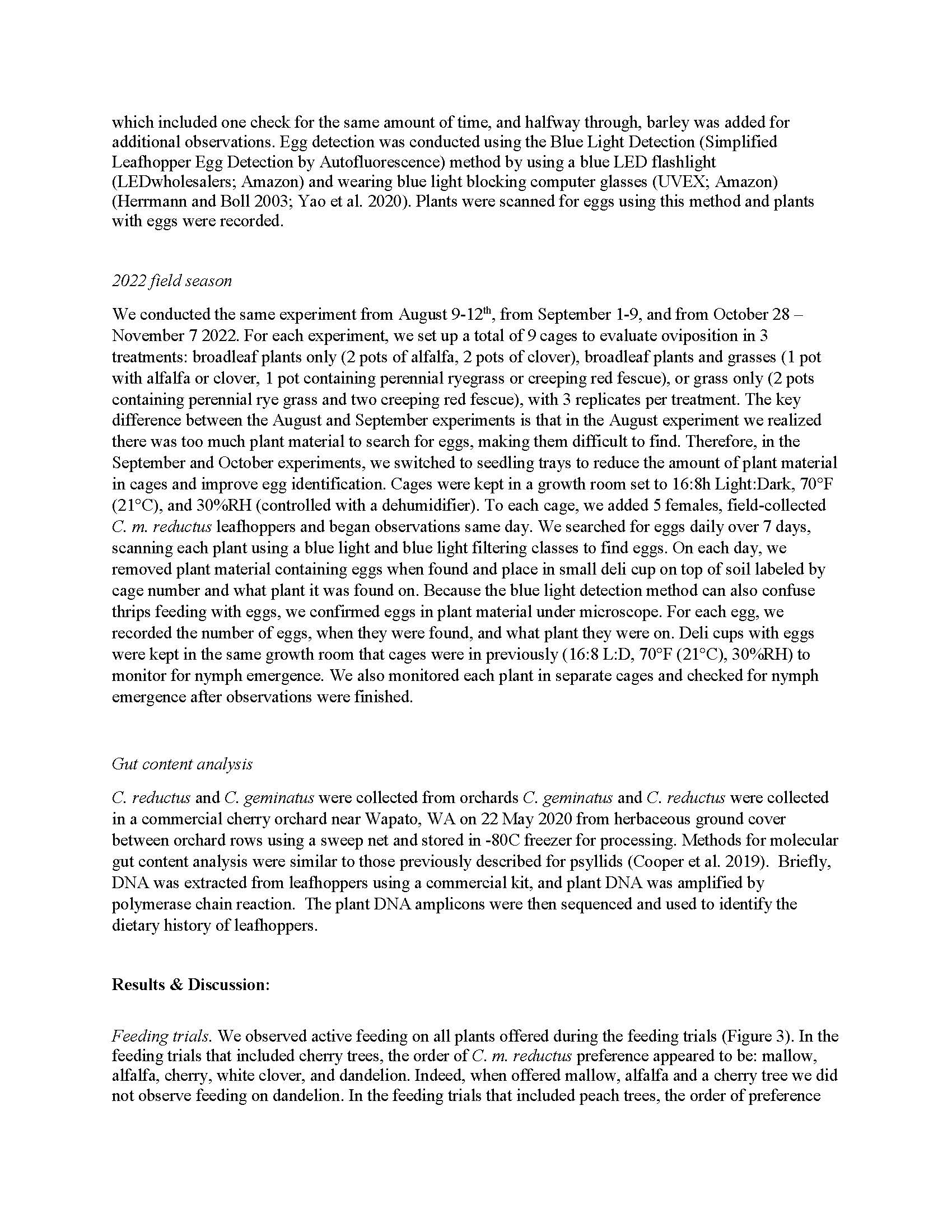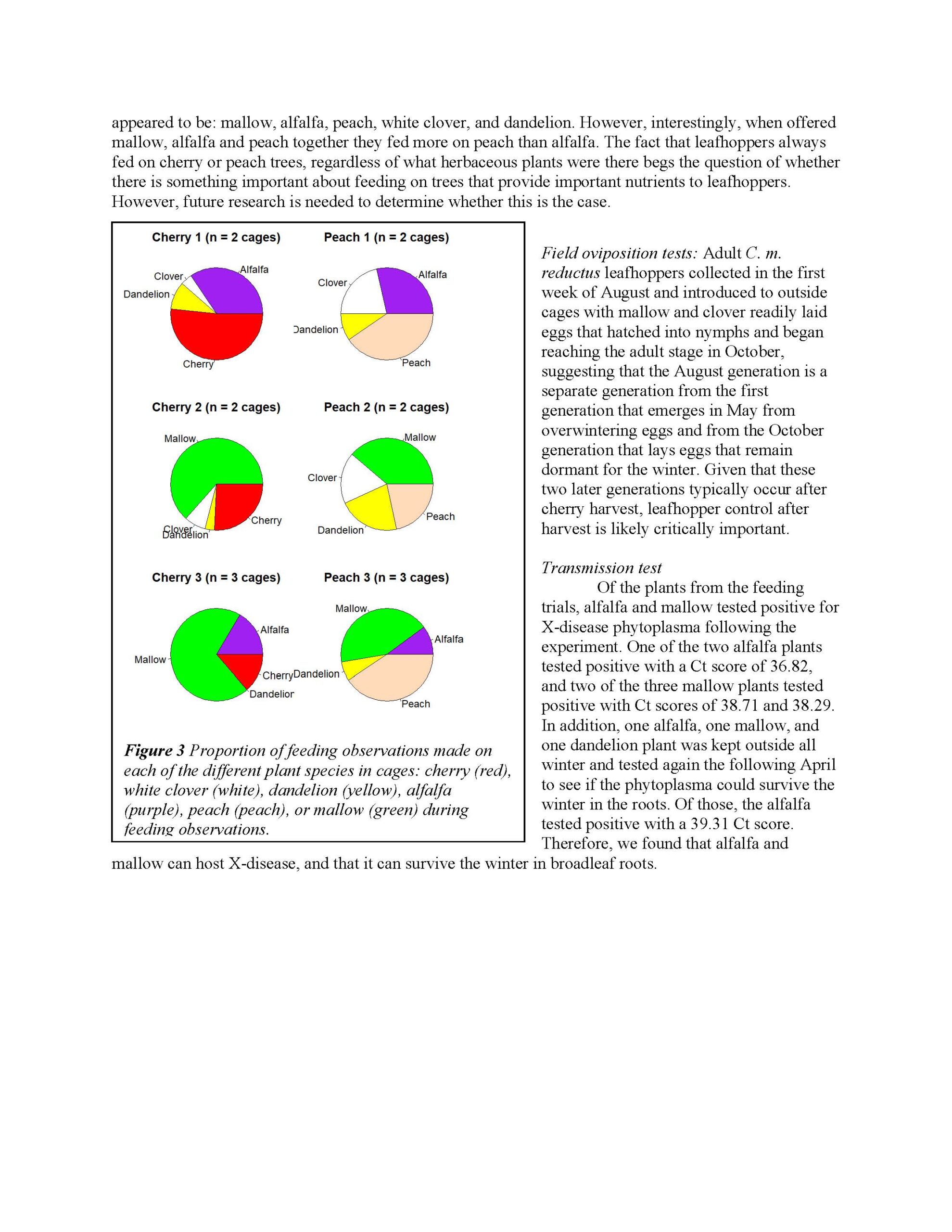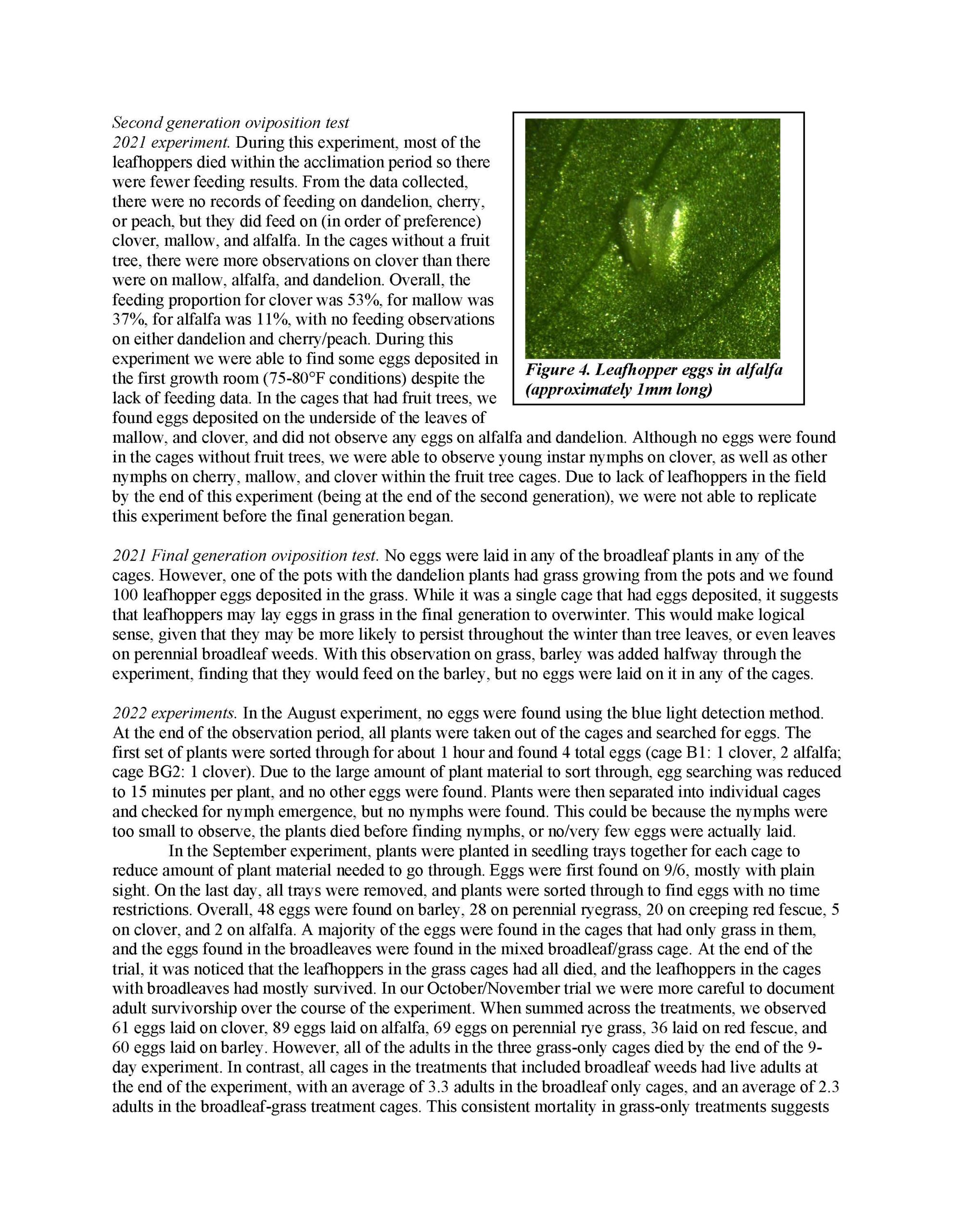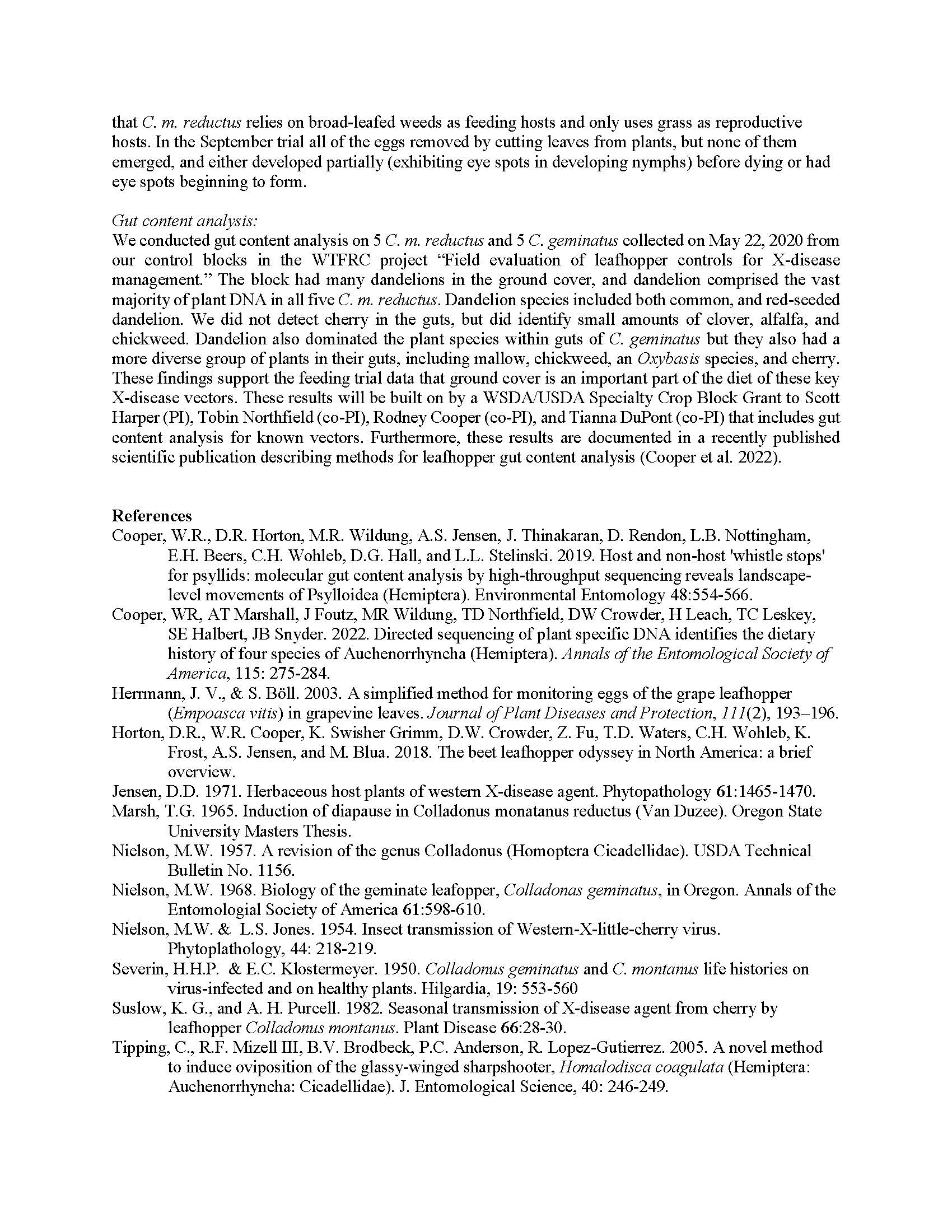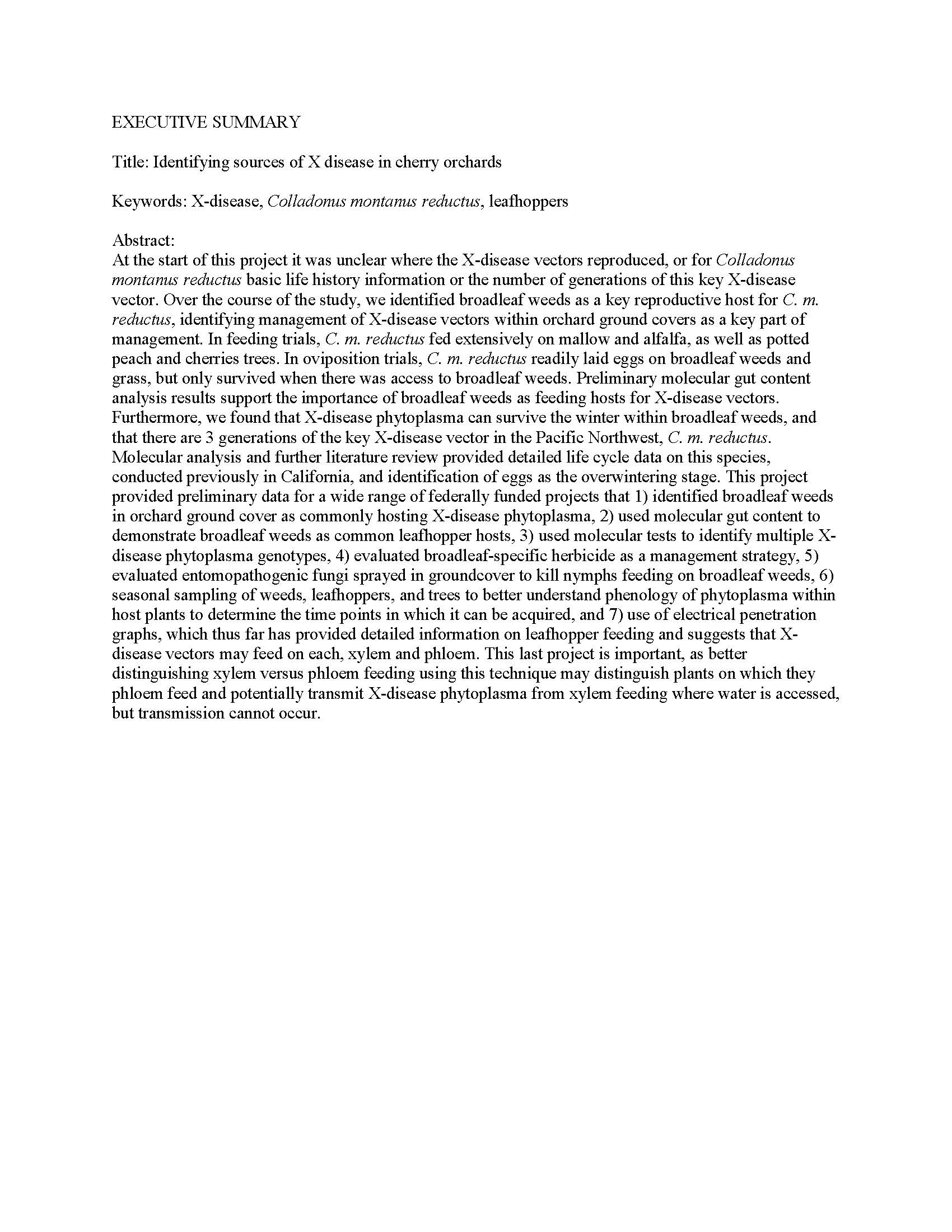Identifying sources of X disease in cherry orchards
Author: Tobin Northfield
Published: 2024
Summary: At the start of this project it was unclear where the X-disease vectors reproduced, or for Colladonus montanus reductus basic life history information or the number of generations of this key X-disease vector. Over the course of the study, we identified broadleaf weeds as a key reproductive host for C. m. reductus, identifying management of X-disease vectors within orchard ground covers as a key part of management. In feeding trials, C. m. reductus fed extensively on mallow and alfalfa, as well as potted peach and cherries trees. In oviposition trials, C. m. reductus readily laid eggs on broadleaf weeds and grass, but only survived when there was access to broadleaf weeds. Preliminary molecular gut content analysis results support the importance of broadleaf weeds as feeding hosts for X-disease vectors. Furthermore, we found that X-disease phytoplasma can survive the winter within broadleaf weeds, and that there are 3 generations of the key X-disease vector in the Pacific Northwest, C. m. reductus. Molecular analysis and further literature review provided detailed life cycle data on this species, conducted previously in California, and identification of eggs as the overwintering stage. This project provided preliminary data for a wide range of federally funded projects that 1) identified broadleaf weeds in orchard ground cover as commonly hosting X-disease phytoplasma, 2) used molecular gut content to demonstrate broadleaf weeds as common leafhopper hosts, 3) used molecular tests to identify multiple X-disease phytoplasma genotypes, 4) evaluated broadleaf-specific herbicide as a management strategy, 5) evaluated entomopathogenic fungi sprayed in groundcover to kill nymphs feeding on broadleaf weeds, 6) seasonal sampling of weeds, leafhoppers, and trees to better understand phenology of phytoplasma within host plants to determine the time points in which it can be acquired, and 7) use of electrical penetration graphs, which thus far has provided detailed information on leafhopper feeding and suggests that X-disease vectors may feed on each, xylem and phloem. This last project is important, as better distinguishing xylem versus phloem feeding using this technique may distinguish plants on which they phloem feed and potentially transmit X-disease phytoplasma from xylem feeding where water is accessed, but transmission cannot occur.
Keywords:


